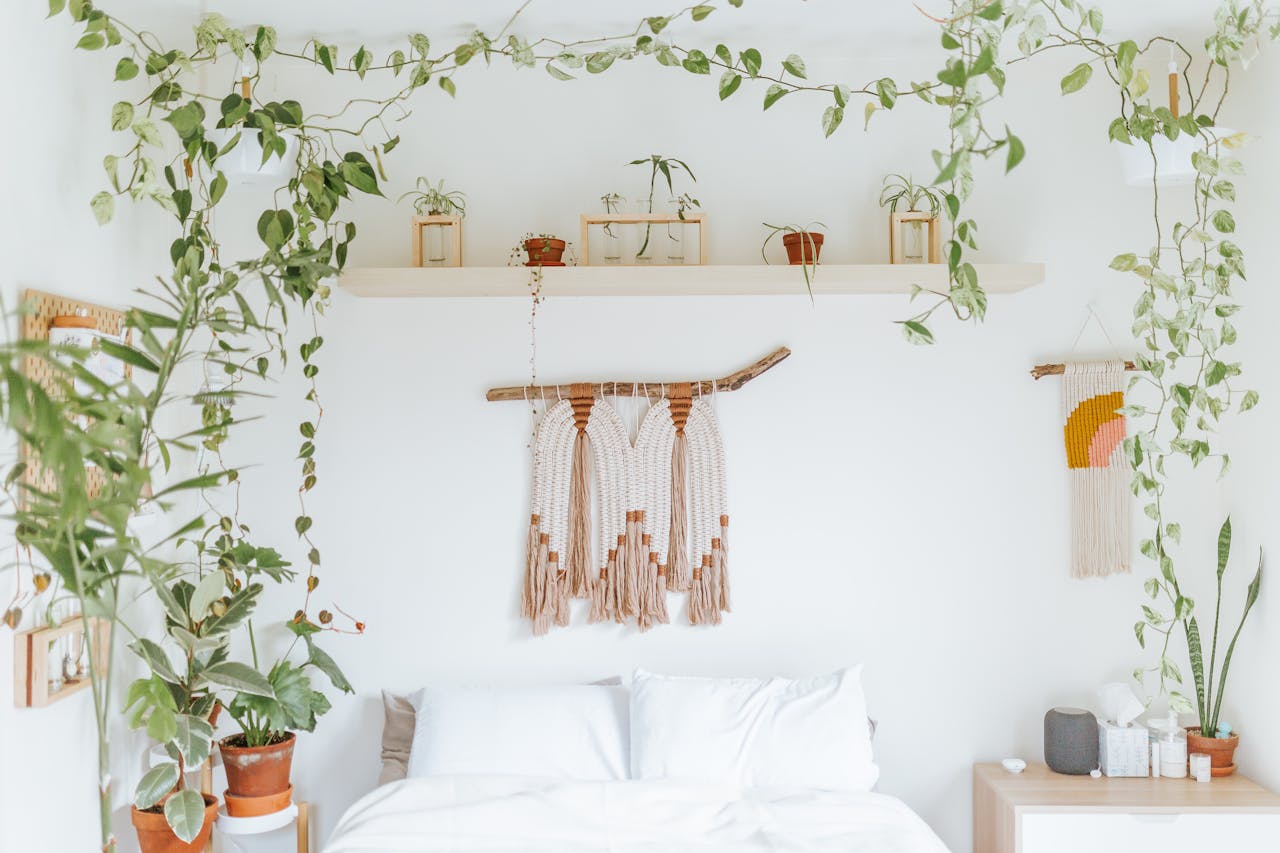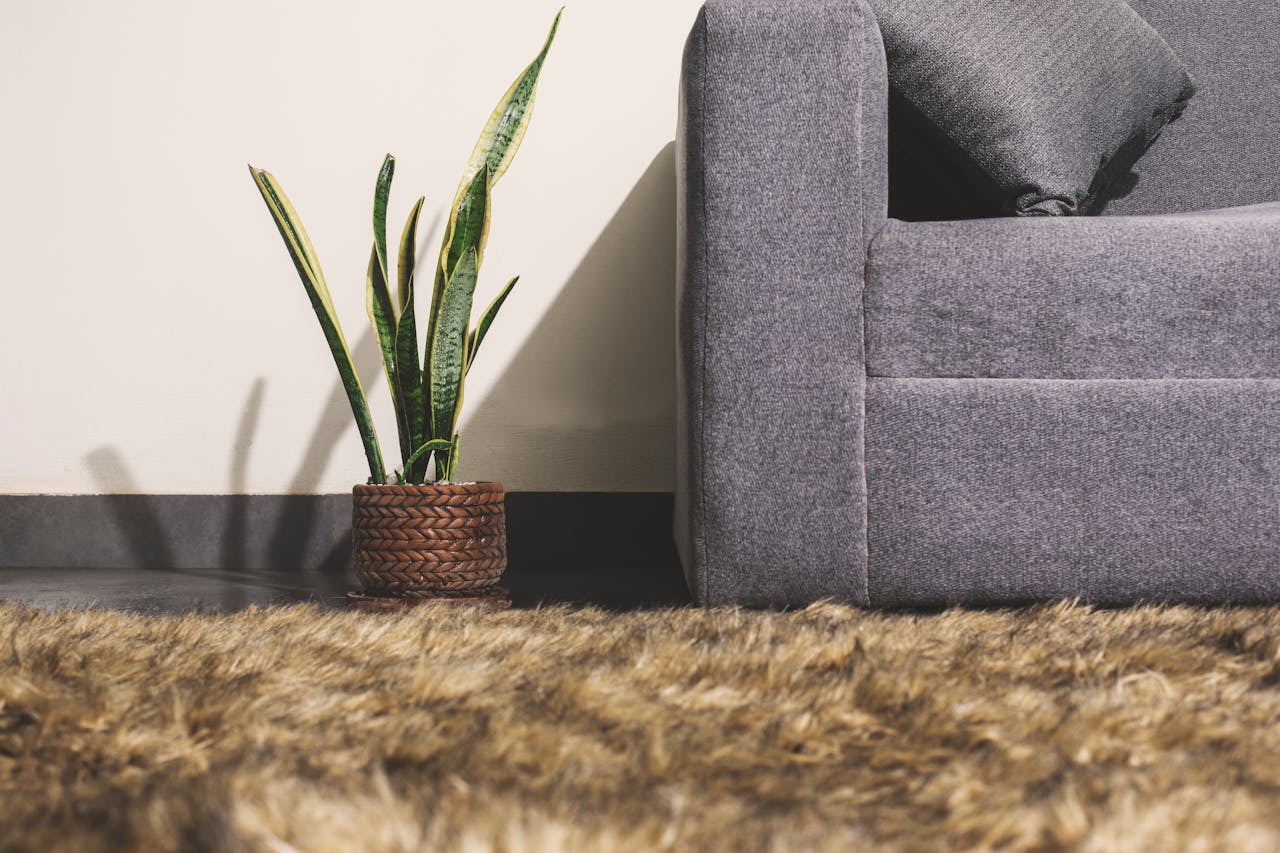Indoor plants bring life, color, and a touch of nature into our homes. They not only enhance the aesthetic appeal of your living spaces but also improve air quality and boost mental well-being. However, maintaining healthy indoor plants can sometimes be a challenge, especially when pests invade your green sanctuary.
Understanding common indoor plant pests and knowing how to control them naturally is essential for keeping your plants thriving without resorting to harsh chemicals. This guide explores the most prevalent indoor plant pests and offers effective, eco-friendly solutions to manage and prevent infestations.
1. Identifying Common Indoor Plants Pests

Before you can effectively control pests, it's crucial to identify which ones are affecting your plants. Here are some of the most common indoor plant pests:
a. Spider Mites
Spider mites are tiny, sap-sucking pests that often go unnoticed until the infestation is severe. They create fine webbing on the undersides of leaves and can cause leaves to become discolored and dry.
b. Aphids
Aphids are small, soft-bodied insects that cluster on new growth, stems, and leaf undersides. They feed on plant sap, leading to distorted growth and the secretion of a sticky substance called honeydew, which can attract other pests.
c. Mealybugs
Mealybugs appear as white, cotton-like masses on stems, leaves, and in the crevices of plants. They suck plant juices, weakening the plant and potentially transmitting diseases.
d. Scale Insects
Scale insects resemble small, brown or black bumps on plant stems and leaves. They feed on sap, causing yellowing leaves and stunted growth. Some scales produce a sticky residue that can attract ants.
e. Fungus Gnats
Fungus gnats are small, dark flies that hover around soil. Their larvae feed on organic matter in the soil, which can damage plant roots and hinder growth.
f. Whiteflies
Whiteflies are tiny, white-winged insects that congregate on the undersides of leaves. They feed on plant sap and excrete honeydew, leading to sooty mold growth.
Also Read- How To Increase Humidity For Your Indoor Tropical Plants
2. Natural Methods to Control Indoor Plant Pests

Managing indoor plant pests naturally involves using non-toxic, environmentally friendly methods that protect both your plants and your household. Here are effective strategies to control common pests:
a. Neem Oil
Neem oil is a natural pesticide derived from the neem tree. It disrupts the life cycle of insects, preventing them from feeding and reproducing.
- How to Use: Dilute neem oil according to the manufacturer’s instructions and spray it on all parts of the plant, especially the undersides of leaves. Repeat every 7-14 days until the infestation is under control.
b. Insecticidal Soap
Insecticidal soap is made from potassium salts of fatty acids and is effective against soft-bodied insects like aphids and mealybugs.
- How to Use: Spray directly onto the pests, ensuring thorough coverage. Repeat treatment every few days until pests are eliminated.
c. Diatomaceous Earth
Diatomaceous earth is a fine powder made from fossilized algae. It works by dehydrating and killing insects that come into contact with it.
- How to Use: Lightly dust the soil surface and plant stems with diatomaceous earth. Reapply after watering or rain.
d. Sticky Traps
Sticky traps are an effective way to capture flying pests like whiteflies and fungus gnats.
- How to Use: Place yellow sticky traps near the affected plants to attract and trap adult insects.
e. Introduce Beneficial Insects
Beneficial insects such as ladybugs and lacewings can help control pest populations naturally.
- How to Use: Release beneficial insects into your home environment where they can prey on pests. Ensure proper conditions for their survival and effectiveness.
f. Homemade Remedies
Simple homemade solutions can also be effective in managing pests.
- Garlic Spray: Blend garlic cloves with water, strain, and spray on plants to repel pests.
- Pepper Spray: Mix cayenne pepper with water and a few drops of dish soap to create a natural insect repellent.
Also Read- How To Use Indoor Plants To Create A Zen Space In Your Home
3. Preventive Measures to Avoid Pest Infestations

Prevention is always better than cure. Implementing these preventive measures can help keep your indoor plants pest-free:
a. Regular Inspection
Frequently check your plants for early signs of pests. Look for discolored leaves, sticky residue, webbing, or visible insects. Early detection makes pest control easier and more effective.
b. Proper Plant Hygiene
Keep your plants clean by wiping down leaves regularly with a damp cloth. Remove any dead or yellowing leaves, as they can harbor pests and diseases.
c. Quarantine New Plants
Before introducing new plants to your home, quarantine them for a few weeks to ensure they are pest-free. This prevents the spread of pests to your existing plants.
d. Maintain Optimal Growing Conditions
Healthy plants are less susceptible to pests. Ensure your indoor plants receive the right amount of light, water, and nutrients. Avoid overwatering, as damp conditions can attract pests like fungus gnats.
e. Use Well-Draining Soil
Use high-quality, well-draining soil to prevent root rot and discourage pests that thrive in moist environments.
f. Ventilation
Ensure proper air circulation around your plants to prevent stagnant air, which can create a conducive environment for pests and fungal diseases.
Also Read- 5 Easiest Indoor Plants To Maintain With Minimal Attention
4. Specific Pest Control Tips

Different pests require tailored approaches for effective management. Here are some specific tips for controlling common indoor plant pests:
a. Spider Mites
- Control Method: Increase humidity around your plants, as spider mites thrive in dry conditions. Use a strong spray of water to dislodge mites from leaves, and apply neem oil or insecticidal soap if necessary.
b. Aphids
- Control Method: Blast aphids off plants with a strong jet of water. Introduce natural predators like ladybugs or use neem oil. Prune heavily infested areas to prevent spread.
c. Mealybugs
- Control Method: Dab mealybugs with alcohol-soaked cotton swabs to kill them on contact. Apply insecticidal soap or neem oil for larger infestations.
d. Scale Insects
- Control Method: Gently scrape off scales with a soft brush or cloth. Use neem oil or insecticidal soap to treat affected areas. Ensure good airflow to prevent future infestations.
e. Fungus Gnats
- Control Method: Allow the top layer of soil to dry out between waterings to disrupt the lifecycle of fungus gnats. Use sticky traps to capture adult flies and apply beneficial nematodes to the soil to target larvae.
f. Whiteflies
- Control Method: Use yellow sticky traps to capture flying whiteflies. Spray plants with neem oil or insecticidal soap to eliminate remaining pests. Remove heavily infested leaves if necessary.
Also Read- Top Mistakes To Avoid When Caring For Indoor Plants In Winter
5. Natural Repellents and Barriers

Implementing natural repellents and physical barriers can further protect your indoor plants from pests:
a. Essential Oils
Certain essential oils act as natural insect repellents. Oils like peppermint, eucalyptus, and tea tree can deter pests when diluted and sprayed on plants.
b. Physical Barriers
Covering plants with fine mesh or using plant collars can prevent pests from reaching the plant. Ensure that barriers do not restrict airflow or light.
c. Companion Plants
Growing companion plants that repel pests can help protect your indoor garden. Plants like basil, lavender, and marigolds can act as natural deterrents.
6. Maintaining Plant Health for Pest Resistance

Healthy plants are inherently more resistant to pests. Here are some tips to keep your indoor plants robust and less susceptible to infestations:
a. Proper Nutrition
Feed your plants with appropriate fertilizers to ensure they receive essential nutrients. Balanced nutrition supports strong growth and resilience against pests.
b. Adequate Lighting
Provide your plants with the right amount of light to promote healthy growth. Insufficient light can weaken plants, making them more vulnerable to pests.
c. Regular Pruning
Trim dead or diseased parts of the plant to prevent pests from hiding and spreading. Pruning also encourages new growth and improves airflow.
d. Watering Practices
Avoid overwatering, as excessive moisture can attract pests and lead to fungal issues. Water plants only when the top inch of soil is dry.
7. When to Seek Professional Help

While natural methods are effective for most pest issues, severe infestations may require professional intervention. If you’ve tried multiple natural remedies without success, consider consulting a professional arborist or a pest control specialist who can provide targeted solutions.
Conclusion
Managing indoor plants pests naturally is not only effective but also safe for your home environment. By identifying common pests, implementing natural control methods, and maintaining preventive measures, you can keep your indoor garden healthy and vibrant. Remember that consistency and vigilance are key to successful pest management. Embrace these eco-friendly strategies to enjoy the beauty and benefits of your indoor plants without the hassle of unwanted pests.













Leave a comment
This site is protected by hCaptcha and the hCaptcha Privacy Policy and Terms of Service apply.